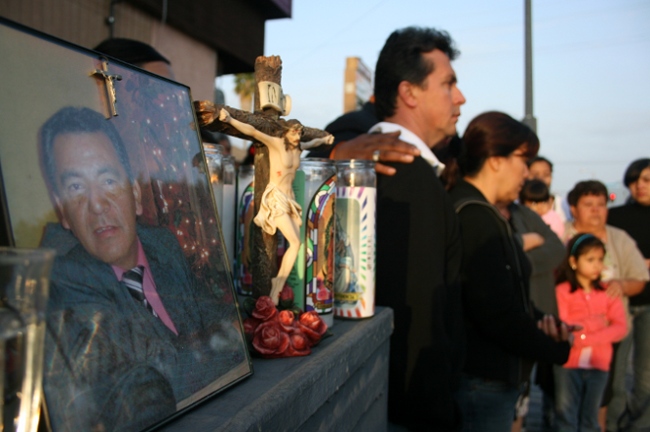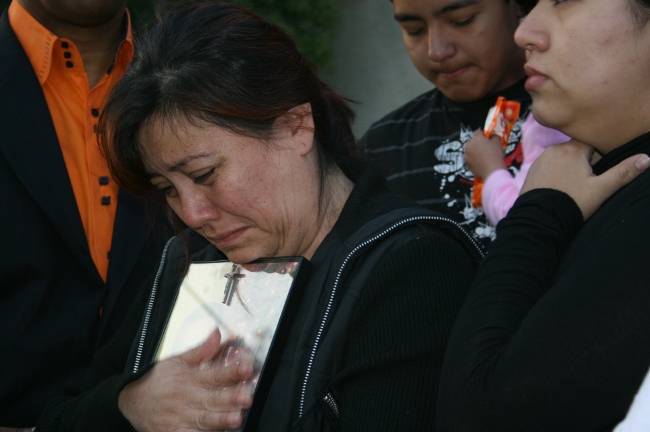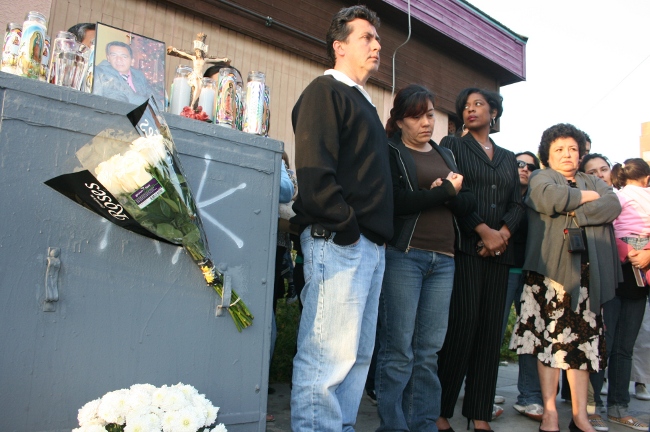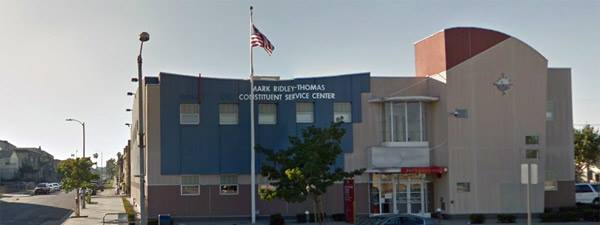
Residents bring concerns to monthly meetings at the South L.A. constituent service center | Southwest Neighborhood Council Facebook
Imagine 212 apartments and one overflowing trash chute. Imagine filthy carpets and beds crawling with bugs. Imagine walking into your laundry room to find homeless people sleeping in piles of dirty clothes.
Now imagine senior citizens living day-to-day in these conditions with no sign of imminent relief. The residents of this senior citizen apartment complex in South L.A. are retired and relying on fixed incomes from the government.
Regardless of its inhabitants, though, the depictions of the complex expressed at a Neighborhood Development Council Meeting for the southwest area in late October sounded almost inhumane.
Chairwoman Leonella Enix began the meeting, held at a local community center, with this pressing issue. Residents of the southwest region eagerly chimed in and pleaded for solutions. (The neighborhood development council’s jurisdiction roughly spans the neighborhoods of Vermont Knolls, Manchester Square and Gramercy Park.)
On top of the aforementioned issues with the senior citizen complex, rent recently increased. Enix said that one resident’s rent is now $27 per month more than the monthly stipend she receives from the federal government to cover housing. She walks around the neighborhood trying to find ways to come by the extra money every month, according to Enix.
Furthermore, the property management team does not speak English, only Spanish, so residents’ complaints frequently go unresolved. The majority of the residents are English-speaking African Americans.
The chairwoman went on to emphasize that the Development Council must figure out ways to help the senior citizens to help themselves. Residents want to convene to discuss possible improvement plans, but there is a $100 fee to use the community room at the complex. Sean Fleming, a representative for U.S. Rep. Maxine Waters (D-Calif.), at the meeting said Waters’s office would request the money to cover a preliminary meeting. Regardless of the outcome of this re-quest, the council plans to raise funds to cover residents’ meeting fees.
Enix said that South Los Angeles needs to find ways to advocate for more resources in general. The conversation then transitioned from senior citizens’ living conditions to concerns about gang activity in the L.A. Police Department’s Southwest Division.
Middle-aged men and women and senior citizens stood up and shouted at the chair, noting that their fear of gang violence increased on the weekends, when much of South L.A.’s police forces are sent to cover the University of Southern California for game days.
These community members took turns trying to convey to the council that they felt “forgotten.” Enix said that the Los Angeles Police Department was currently working on new strategies to combat gangs in the area, but that attempts during the last two weekends had failed.
LAPD officers left the neighborhoods around 9:30 p.m., according to Enix. Residents told her that gangs “waited them out,” and simply struck later in the night.

A cracked sidewalk in Los Angeles | waltarrrrr/Flickr
The last concern discussed at the late October meeting was the condition of the neighborhood’s sidewalks. Margaret Peters, the council’s treasurer, said that she has been a homeowner in the area for 26 years, and her sidewalks looked more “atrocious” than ever.
According to Peters, the city of Los Angeles is discussing options to help residents fix the sidewalks. One is the Fix and Release Program, in which the city would repair the sidewalks once, but any subsequent repairs will be the responsibility of the homeowner. Another is the 50/50 Program, in which half of the cost of a sidewalk repair would be covered by the city and the homeowner would cover the other half. Under both plans, part of the deal entails homeowners being liable for any injuries occurring on their section of sidewalk.
The resounding response in the room was an insistent plea for another resolution to the hazardous sidewalk situation. Community members indicated that trees planted by developers decades ago were the cause of the unsafe sidewalks, and they did not see themselves as liable for buck-ling walkways. Chiefly, they did not want to pay for something they believed was a matter for the public works department.
This meeting provided an opportunity to hear many aspects of local governance that residents of southwest L.A. want to change. They want better living conditions for senior citizens. They want increased protection from gangs. They want safer sidewalks. Above all, they want to stop feeling forgotten.
The Empowerment Congress Southwest Area Neighborhood Development Council meets at 6 p.m. on the third Monday of every month at the South Los Angeles Constituent Service Center.
Like Intersections on Facebook, follow us on Twitter and sign up for the Newsletter to stay in the loop on news and views from South L.A.
Update: An earlier version of this article said that the city is considering two programs to fix sidewalks. In fact, these are among various options still under discussion.









 Police and FBI agents announced hundreds of arrests made as part of a three-month program called Save Our Streets.
Police and FBI agents announced hundreds of arrests made as part of a three-month program called Save Our Streets.
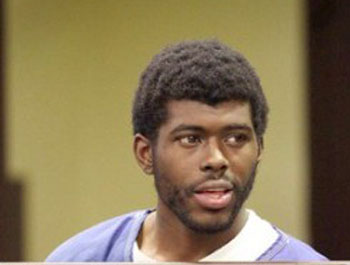
 Webb’s testimony was part of the continuing trial of Arlon Watson, a 22-year-old Compton resident charged with the 2009 shooting death of Dannie Farber, Jr., a Narbonne High School senior and star football player.
Webb’s testimony was part of the continuing trial of Arlon Watson, a 22-year-old Compton resident charged with the 2009 shooting death of Dannie Farber, Jr., a Narbonne High School senior and star football player.  Aaron Shannon, 5, was shot on Halloween. Shannon died in hospital Monday night. (Photo courtesy of
Aaron Shannon, 5, was shot on Halloween. Shannon died in hospital Monday night. (Photo courtesy of 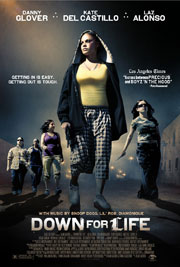 “If you’re gonna fight for something, it should be for something better than this.” Those are the words of Rascal – the 15-year-old leader of a Latina gang clique – explaining why she’s leaving her life of violence. Alan Jacobs’ film, “Down for Life,” follows the story of Rascal (played by newcomer and
“If you’re gonna fight for something, it should be for something better than this.” Those are the words of Rascal – the 15-year-old leader of a Latina gang clique – explaining why she’s leaving her life of violence. Alan Jacobs’ film, “Down for Life,” follows the story of Rascal (played by newcomer and 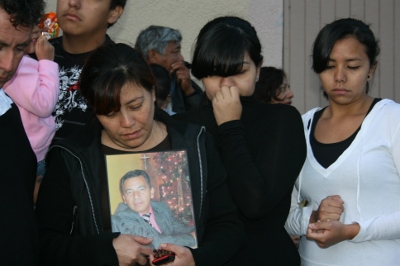 It’s a birthday Vilma Rivera will never forget. On March 23rd, at about 6 p.m., the 46-year-old was returning home with her husband Mario, 51, after buying food for her birthday dinner. As they reached the sidewalk on Crenshaw Boulevard and 29th Street, Mario was hit in the back by two stray bullets from a shootout between two alleged gang members. He was taken to the hospital, but died soon after.
It’s a birthday Vilma Rivera will never forget. On March 23rd, at about 6 p.m., the 46-year-old was returning home with her husband Mario, 51, after buying food for her birthday dinner. As they reached the sidewalk on Crenshaw Boulevard and 29th Street, Mario was hit in the back by two stray bullets from a shootout between two alleged gang members. He was taken to the hospital, but died soon after.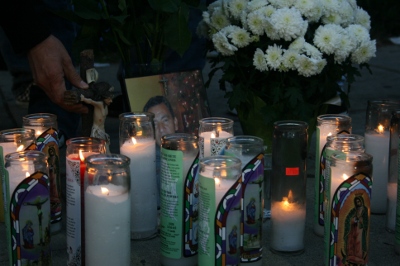 Mario’s friend Jandy Cisneros said she would always remember him as a loving and caring person who was always with his family. “He was a musician. He had an internet radio talk show, he was a member of a band, and played the keyboard, piano and guitar. He loved music, and that’s how we’re going to remember him,” she said.
Mario’s friend Jandy Cisneros said she would always remember him as a loving and caring person who was always with his family. “He was a musician. He had an internet radio talk show, he was a member of a band, and played the keyboard, piano and guitar. He loved music, and that’s how we’re going to remember him,” she said.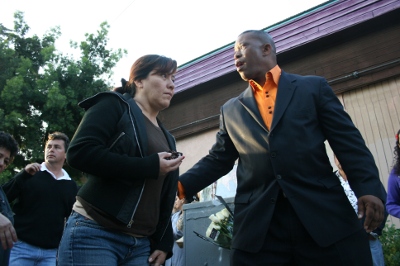 LEFT: Mario’s wife Vilma and Eddie Jones, president of the Los Angeles Civil Rights Association
LEFT: Mario’s wife Vilma and Eddie Jones, president of the Los Angeles Civil Rights Association